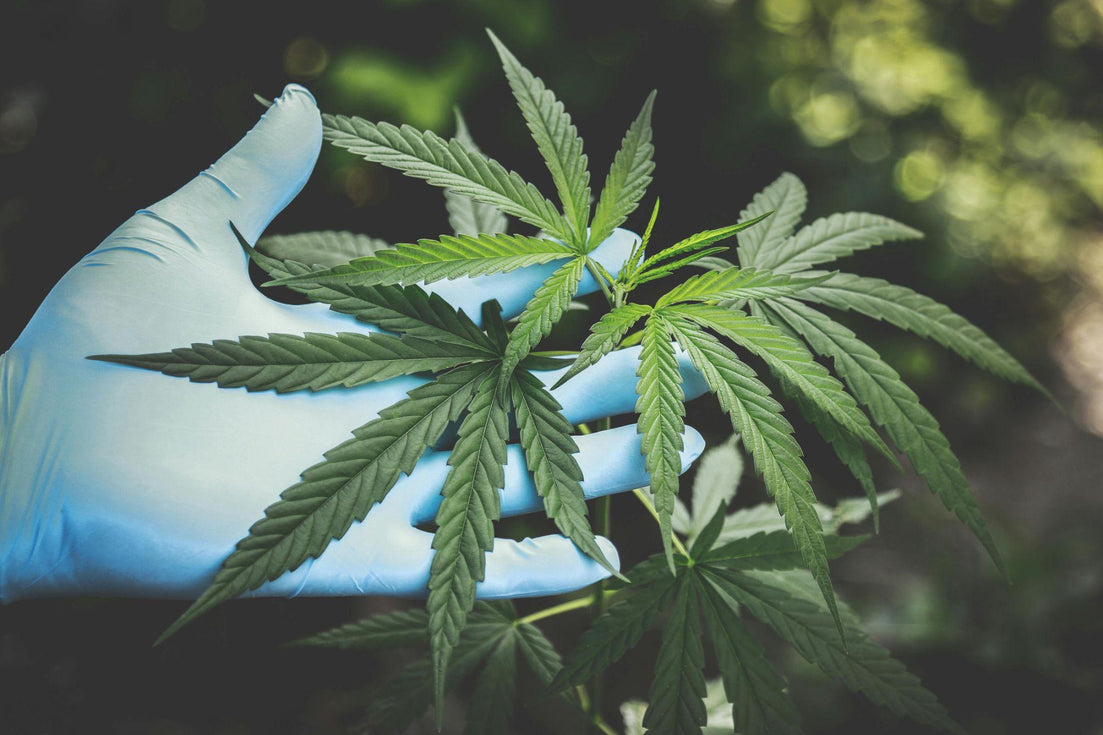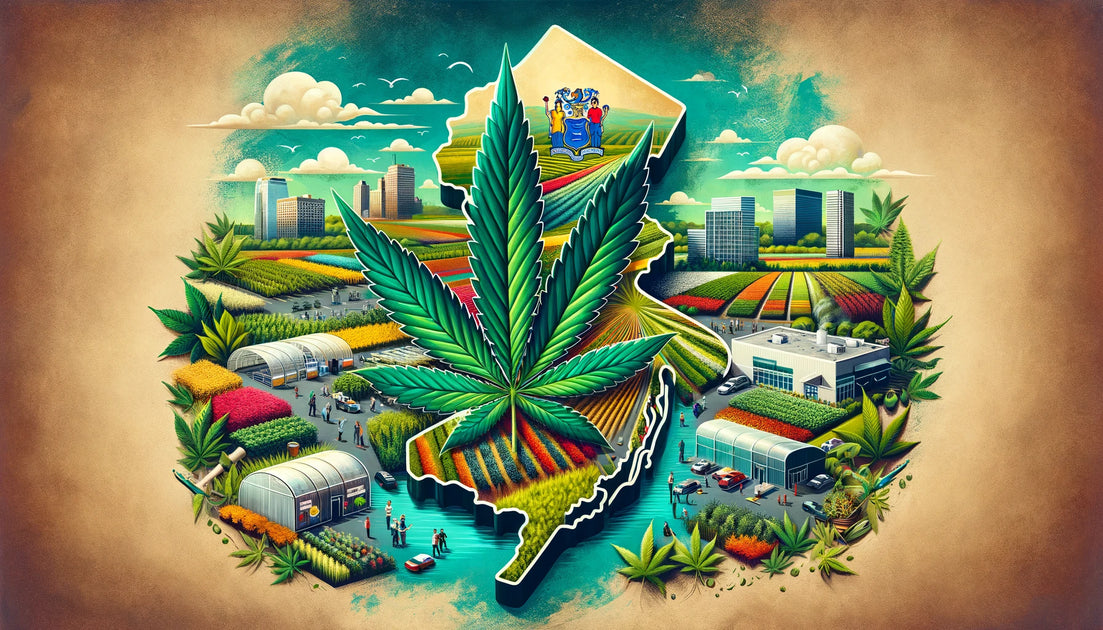Your cart is currently empty.

Ever heard of the phrase "Should I prune or not?" Not referring to a meal selection, but rather an inquiry into marijuana cultivation. We're delving into the world of cannabis cultivation!
Imagine standing before two young cannabis plants - one topped and one non-topped. Both have potential, but their growth stories will unfold differently.
Topping is like splitting a river in two; it redirects energy flow, shaping plant structure for potentially bigger yields. But topping isn't without risks and challenges too.
In contrast, leaving your plant untamed lets nature take its course...tall growth with an alpha cola soaking up most of the energy.
Curious yet? Good! Because this journey explores both sides: topped vs non-topped cannabis plants. Buckle up as we navigate through techniques, results and tips that could help you optimize your next grow cycle...
Understanding Cannabis Topping Technique
Topping is a tried-and-true technique that's often used by cannabis growers. But what exactly does it involve? And why do some cultivators swear by it?
What is Topping?
Cutting the top of a veg cannabis plant, not for revenge but rather as an agricultural practice - that's what topping is all about. It involves cutting off the growing tip or apex of a vegetating cannabis plant. This isn't done out of spite. Rather, there's science and strategy behind this move.
Cannabis plants have a natural tendency to grow one large central bud called the main cola (kinda like how we have one head). When you cut off this main growth point - bam. You've topped your plant.
The Purpose of Topping
Now let’s get down to business: Why top at all? The answer lies in reshaping our green friend for maximum productivity. By topping the plant, we're tricking her into thinking she lost her main cola (we know, mean trick.).
This sparks an 'emergency response' from our dear lady where she decides to split her energy between two new colas instead of focusing on just one. As per Grow Weed Easy, with proper care and attention after topping, these two new branches can be trained into becoming robust productive arms capable of producing plenty buds.
| Growth Stage | No-Topped Plant Growth Tip Count | Topped Plant Growth Tip Count |
|---|---|---|
| Vegetative Stage Start (Pre-Topping) | 1 | - |
| Veg Stage Mid-Point (Post-Topping) | - | 2 |
Comparing Topped and Non-Topped Cannabis Plants
Growth Patterns of Non-Topped Plants
If you've ever watched a non-topped cannabis plant, you'll notice it grows much like an old-school Christmas tree. It shoots up tall and fast, with one main stalk or "cola" at the top.
This type of growth pattern is what we call apical dominance - where the highest point of the plant becomes its central powerhouse. This causes lower branches to grow more slowly because they get less energy.
In contrast, topped plants take on a different shape entirely due to their modified growth pattern.
Energy Distribution in Non-Topped Plants
A non-topping approach means most energy gets funneled towards this dominant cola. While this may seem like an efficient strategy for maximum height gain, there's a catch: fewer colas usually mean lesser yield.
The science behind this? Think about your plant as if it were baking a cake – only so many ingredients (or in our case, resources) are available. When all these goodies go into making just one large 'slice', other potential slices stay underdeveloped.
Taking A Closer Look At Topping Technique
What is Topping?
Topping involves snipping off that growing tip during vegetation phase which results in two new main stems sprouting from below the cut site instead of one dominant cola forming above everything else. It's like creating twins out of one child. The result? Instead of focusing on feeding just King Cola up top, now your resources can cater to multiple high-yielding areas known as 'colas'.
The Purpose Of Topping
We use topping primarily to control height and promote bushier growth. Think of it as 'parenting' your cannabis plant into sharing its toys (energy) more equally among all the kids (branches).
Instead of shooting up vertically, topped plants grow horizontally which allows for better light penetration resulting in healthier, more productive lower branches.
The Impact Of Topping On Cannabis Plant Yield
Non-topped cannabis plants grow tall and fast, focusing their energy on a single 'cola', while topped ones distribute energy evenly among multiple colas. Topping not only controls height but promotes bushier growth for better light penetration and healthier branches. So, snip that tip to multiply your high-yielding areas.
The Impact of Topping on Cannabis Plant Yield
It's a hot topic among growers: does topping really boost cannabis yield? Two different perspectives exist regarding this subject. Let's delve into them.
How Topping May Improve Yields
Topping, in essence, means snipping off the top of your cannabis plant. This forces it to grow more horizontally than vertically. The result is a bushier plant with multiple main branches or 'colas'.
Why do we want this? Because more colas mean more sites for bud production. When you top a plant early enough (around the third node), it diverts its energy from growing tall to spreading out and producing buds along each cola. This can potentially increase overall yields.
The Role of Genetics and Growing Conditions
All that said, topping isn't magic—it won't transform every tiny seedling into an abundant tree overflowing with flowers. A lot depends on genetics and environmental conditions as well.
Certain strains react better to topping than others due to their genetic makeup (Sensi Seeds report no 13). For instance, Indica-dominant strains tend to respond well because they're naturally bushy while some Sativa strains may not fare as well since they're typically taller plants.
- If you've got good lighting that reaches all parts of your plant evenly—a critical factor—the topped areas will develop full and lush.
- But if your light source is too far or uneven, the lower parts may not get enough light to fully develop, leading to a potential decrease in yield (Leafly's guide on cannabis plant training, stat no 14).
The takeaway here? Topping can be beneficial, but success requires an understanding of strain genetics and attentive management of growing conditions. It needs thoughtful consideration of strain genetics and careful control of growing conditions for optimal results.
Topping: A method that could boost cannabis yield by creating a bushier plant with more bud-producing colas. But, it's not magic. Its effectiveness depends on strain genetics and growing conditions. Indica-dominant strains typically respond well, while Sativa may not.
Risks and Challenges Associated with Topping
Like a hair stylist wielding shears, cannabis growers can use topping to sculpt their plants. But it's not all sunshine and high yields - there are risks.
Plant Stress
Topping your cannabis plant is like sending it into battle; it causes stress. When you top a plant, you're essentially wounding it. This triggers the release of stress hormones which may slow down growth initially. Studies show that topped plants often require more time to recover before they start growing again at full speed.
Exposure to Pathogens
If gardening were an action movie, pathogens would be the villains. They lie in wait for any sign of weakness - like open wounds from topping. These microscopic baddies can invade through cut stems, causing diseases such as root rot or powdery mildew.
The Humidity Factor
Bushier plants create microclimates within their foliage – little tropical paradises perfect for pests and molds if humidity levels aren't managed well. Research indicates that improper ventilation around dense leaves could lead to increased moisture build-up, thus posing additional challenges in disease management.
Growth Stunt Risk
Last but not least is the risk of stunted growth post-topping (yeah, I know we've already mentioned this once...but its importance bears repeating). If done improperly or too frequently, topping can permanently slow down your plant's growth. This isn't just about waiting a little longer for the harvest - it could mean less bud at the end of the day.
But don't be spooked by these risks and give up on topping altogether. Remember, just like mastering bike riding or nailing your grandma's secret spaghetti sauce recipe – practice is key in growing cannabis too. Just make sure you're
Mastering the Shears: Topping cannabis plants is a skill that can lead to higher yields, but it's not without risks. It can stress your plant, expose it to diseases and stunt growth if done wrong or too often. Despite these challenges, with practice you can get it right.
Combining Topping with Other Training Techniques
Topping is a fantastic tool in the grower's arsenal, but it really shines when combined with other training techniques. Remember that variety is the spice of life - and this rings true for cannabis plants too.
The Synergy Between Topping and Low Stress Training (LST)
Low Stress Training, or LST, is all about gently bending and tying down branches to encourage horizontal growth. It's like yoga for your plant. When you combine topping with LST, you create an even canopy where light penetration can be maximized.
This approach promotes bushier growth by allowing more bud sites exposure to light sources. The result? More bang for your buck when harvest time comes around.
Fusing Topping with Super Cropping For Greater Results
If topping was step one on our journey to maximize yields, consider super cropping as taking things up another notch. This technique involves intentionally damaging the plant stems—don't worry; they're tougher than they look—to promote better branching and higher yields.
Mixing super cropping into our cocktail of topping helps increase overall crop yield significantly while still maintaining control over height – because nobody likes a gangly weed tree right?
Uniting Topping With ScrOGging: A Match Made In Grow Room Heaven
A classic combo meal in the cannabis cultivation world has got to be topping plus ScrOGging (Screen of Green). ScrOG involves weaving branches through a horizontal screen or netting to create an even canopy.
This technique works hand in glove with topping, helping manage plant height and ensuring light is distributed evenly across all bud sites. Plus, it gives your grow room that cool 'green sea' aesthetic.
The Art of Topping Cannabis Plants Outdoors
Mastering the art of topping cannabis plants outdoors involves understanding not just how to top, but also when and why. Let's start with the basics - topping is a simple yet effective way to encourage your cannabis plant to grow more horizontally than vertically, promoting a bushier growth pattern.
Topping can be advantageous for outdoor growers as it enables them to capitalize on available space and sunlight more efficiently. When done correctly, you'll have multiple growing points or colas instead of one main cola that typically grows in non-topped plants.
However, this technique can be tricky to master. For starters, you need to get your timing right because if you top too early or late in the vegetative stage it could lead to unnecessary stress on the plant which might stunt its growth.
Timing Is Everything
To avoid undue stress on your plants, wait until they've developed at least 4-6 nodes before topping. The ideal time is usually around week three after germination when there are enough leaves below that will help support new growths following the procedure.
You should also keep an eye out for weather conditions while planning this exercise since damp weather can expose topped areas to mold due largely by humidity buildup near open wounds left behind from cutting off topside branches; sunny days would thus be best suited for such procedures as they aid quick healing post-top-cutting.
Tackling Open Wounds
An important aspect often overlooked during topping outdoors is managing open wounds left by cuts made atop these plants. While some recommend using store-bought products like Cannaboost or Rhizotonic, I've found that a simple homemade solution of honey and water can do wonders.
Honey acts as a natural antiseptic, reducing the risk of infection. It also helps seal the wound, protecting it from pests and other potential threats. To apply, just mix equal parts of honey and warm water to make an easy-to-use paste; you can then gently smear this over your plant's cut surface for effective protection.
The Balance Act: Sunlight vs Shade
Don't forget, after the procedure, you've got to manage how much sun your outdoor topping gets too.
Mastering outdoor cannabis topping requires knowing not just the 'how', but also the 'when' and 'why'. It's a technique that encourages horizontal growth, helping you maximize space and sunlight. But be cautious with timing - too early or late could stress your plant. Wait until they've developed 4-6 nodes, ideally around week three after germination.
FAQs in Relation to Topping vs Non-Topped Cannabis Plants
Is it better to top cannabis plants?
Topping can be beneficial as it promotes bushier growth and multiple colas, potentially boosting yields. However, its effectiveness varies based on genetics and growing conditions.
What happens if you don't top your cannabis plant?
If not topped, a cannabis plant will grow taller with most energy directed towards the dominant cola. This could result in lesser lower branch development.
Does topping actually increase yield?
Topping may improve yields by promoting more robust lower growth and creating multiple main colas. Yet again, outcomes depend on factors like strain genetics and environment.
Can you top cannabis too many times?
You can overdo topping which might stress the plant excessively or even stunt its growth. Therefore balance is key when applying this technique.
Conclusion
Topping vs non-topped cannabis plants, a decision that can shape your yield story. Remember, topping is like splitting a river; it reshapes energy flow and potentially boosts harvests.
Yet, this technique isn't without its challenges - from plant stress to humidity build-up. So be mindful of the risks before making that cut!
Nature has its own wisdom too! Non-topped plants grow taller and faster with an alpha cola basking in most of the energy.
The ultimate trick lies in combining techniques for optimal results. The art is to balance nature's course with human intervention.
No matter which route you choose...topped or not...your journey as a cultivator will indeed be exciting and rewarding!



